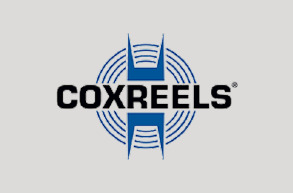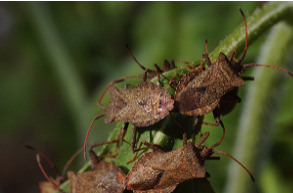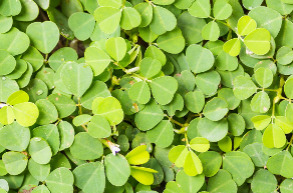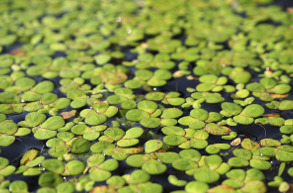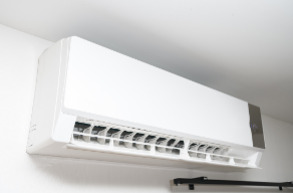Kentucky Bluegrass Control
Most Effective Products
Kentucky Bluegrass Control: How To Get Rid of Kentucky Bluegrass
Kentucky bluegrass is a perennial, cool-season lawn grass. This means that it will come back year after year and grows most vigorously during the cool seasons of fall and spring. Kentucky bluegrass is found predominantly in northern climates where moderately warm summers and cold winters align with its natural preferences and growth cycle.
While Kentucky bluegrass has Kentucky in its name, this versatile and popular turfgrass was originally discovered in Europe and northern Asia. The grass was first introduced to the US as a pasture grass in states like Kentucky, hence why they earned their name. The grass is commonly known in by the initials KBG, and over the years has risen in popularity as an ideal grass type for residential and commercial landscapes because of its dark green color and beauty.
Even though it is a cool-season grass, KBG is versatile enough to thrive and survive in warmer conditions. Its not unusual to find Kentucky bluegrass growing in lawns in the West and Southwest parts of the country if they receive a lot of sun and the soil is exceptionally moist.
If you see Kentucky bluegrass on your lawn that you want gone, you can successfully remove KBG with the help of our DIY treatment guide. Our lawn care experts have compiled this guide to show you exactly what you need to remove Kentucky bluegrass from your lawn for good. Follow our step-by-step instructions below and use our recommended products to eliminate KBG quickly and affordably.
Identification

Kentucky bluegrass is a cool-season grass with a pleasant dark green in color and has a dense, thick appearance that is quite beautiful, which is why many homeowners don't see it as a weed at all and prefer it to be their main grass type. The grass shares similar characteristics and seedheads of annual bluegrass. In order to tell the difference, you need to carefully observe how the leaf blade connects to the sheath. If there is a white ligule present it is annual bluegrass. If the ligule is not present, it is Kentucky bluegrass.
Use our description and image above to help you to identify Kentucky bluegrass on your lawn. If you are having trouble identifying your weed, contact us and we will properly ID the plant for you as well as give you product recommendations for control.
Inspection

Where to Inspect
Kentucky bluegrass is a self-spreading, sod-forming grass. Once established, it spreads readily via underground stems (known as rhizomes) to form a dense, thick turf. This aggressive growth habit gives Kentucky bluegrass the capacity to recuperate quickly from damage.
Once you have gauged how big of a problem you have and where they are concentrated on your landscape, you can then equip yourself with herbicides and focus your application on those areas.
What To Look For
The grassy weed should be easy to spot when they have matured a bit because their seedheads often stand out and cause difficulty when mowing and create an uneven appearance that will mess with your lawns uniformity.
Treatment
Before chemical application, please make sure to equip yourself with personal protective equipment for your personal safety (Glasses, gloves and particle mask).
The best way to control Kentucky bluegrass is not having it show up on your lawn in the first place. If it is established and growing you will have a harder time getting rid of it. We recommend applying a pre-emergent such as Barricade at the right time to make sure Kentucky bluegrass doesn't emerge in the springtime and at best case, is killed off completely.
If Kentucky bluegrass is already established on your lawn, post-emergent products will have to do. Our top recommendation is Certainty Herbicide.
Step 1: Prepare and Apply Barricade Pre-Emergent

Barricade contains Prodiamine, a highly effective active ingredient that controls and prevents seeds from sprouting. Calculate the square footage of your lawn to determine how much Barricade you will need. To do that, you will need to measure (in feet) the area length and width and multiply the two values (length x width = square footage). Depending on your turfgrass type, Barricade can be applied at a rate from 1.5 pounds to 4 pounds per 1,000 sq. ft. (read the label to find the proper rate for your turf type).
Load the barricade granules at the right setting on a hand or broadcast spreader and then apply the granules until your lawn is covered evenly to get a uniform application. Make sure to follow the instructions on the label for application rates and make sure to pre-measure your lawn before application.
Timing is key when conducting a pre-emergent application or else the application will be ineffective. The best time to apply pre-emergent to get rid of Kentucky bluegrass should be around in the spring and then again in the early fall, generally around the time temperatures start to lower below 70 degrees.
Step 2: Mix and Apply Ferti-lome Weed Free Zone

Ferti-lome Weed Free Zone is a selective post-emergent herbicide that contains the active ingredient 2,4-D. It provides excellent control of Kentucky Bluegrass. Ferti-lome Weed Free Zone is applied at a rate of 1.5 to 2.0 oz. per 1,000 sq. ft.
Mix Ferti-lome Weed Free Zone into a hand-pump sprayer and agitate well to ensure the product is well-mixed. Use a fan nozzle setting on your sprayer while applying. If you have desired grass around where the Kentucky bluegrass is growing, you can choose to spot treat. Either way, be careful when using herbicides in general around your desired plants as they could potentially kill your wanted turf.
Prevention

If you are able to get rid of Kentucky bluegrass from your lawn, you need to make sure it doesn't make a return. Continue to lay Barricade pre-emergent and be diligent with it because it may take a number of years to fully control this grass if it has been a recurring problem.
Other cultural practices that will hinder the redevelopment of this invasive grassy weed include changing your watering routine so the soil is not too wet and mowing your grass at a lower height because the grass likes to be mowed high. Make sure your selected grass type is getting the right nutrition via fertilizer as well.
Key Takeaways
- Kentucky bluegrass is a popular cool-season grass that can take over where it's not wanted and once established it can be very hard to remove.
- We recommend either using a post-emergent treatment of Ferti-lome Weed Free Zone to treat Johnsongrass. A pre-emergent treatment of Barricade is recommended if the weed hasn't emerged yet.
- To prevent a return of Kentucky bluegrass, apply Barricade pre-emergent and practice cultural methods of control (water infrequently, mow grass low).





















































